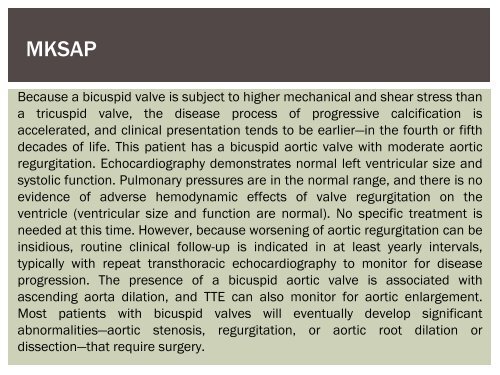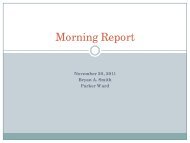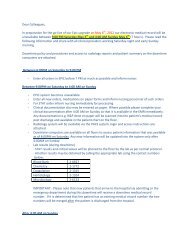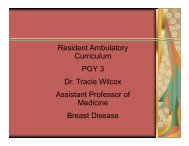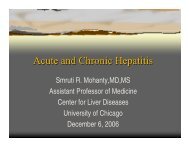Splenic Infarct, Atrial Fibrillation
Splenic Infarct, Atrial Fibrillation
Splenic Infarct, Atrial Fibrillation
Create successful ePaper yourself
Turn your PDF publications into a flip-book with our unique Google optimized e-Paper software.
MKSAP<br />
Because a bicuspid valve is subject to higher mechanical and shear stress than<br />
a tricuspid valve, the disease process of progressive calcification is<br />
accelerated, and clinical presentation tends to be earlier—in the fourth or fifth<br />
decades of life. This patient has a bicuspid aortic valve with moderate aortic<br />
regurgitation. Echocardiography demonstrates normal left ventricular size and<br />
systolic function. Pulmonary pressures are in the normal range, and there is no<br />
evidence of adverse hemodynamic effects of valve regurgitation on the<br />
ventricle (ventricular size and function are normal). No specific treatment is<br />
needed at this time. However, because worsening of aortic regurgitation can be<br />
insidious, routine clinical follow-up is indicated in at least yearly intervals,<br />
typically with repeat transthoracic echocardiography to monitor for disease<br />
progression. The presence of a bicuspid aortic valve is associated with<br />
ascending aorta dilation, and TTE can also monitor for aortic enlargement.<br />
Most patients with bicuspid valves will eventually develop significant<br />
abnormalities—aortic stenosis, regurgitation, or aortic root dilation or<br />
dissection—that require surgery.


